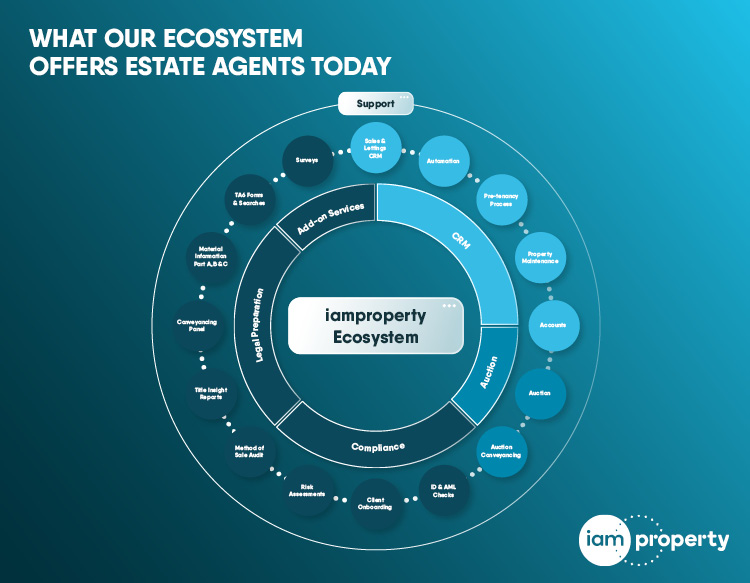Group income fell to £671.9m for the year, down from £737m in 2016; it would have been worse had it not been for strong performances by the group’s conveyancing, mortgage and surveying activities.
However, much of this morning’s statement was given over to the future. There is an exclusive interview by Countrywide chairman Peter Long with Estate Agent Today editor Graham Norwood, which you can see here. And below, there is the company’s announcement about its recovery plan, in full below:
In the fourth quarter of 2017 an analysis was undertaken of the Sales and Lettings businesses led by the chairman, Peter Long, to understand why the strategy, which had been pursued from 2015, was not delivering growth and had in fact resulted in Sales and Lettings losing substantial market share and profitability.
On 24 January 2018 the Group's chief executive left the business and Peter Long was appointed executive chairman. The promotion of Paul Creffield, an industry veteran with over 35 years' experience who has been with the Group since 2006 to the position of Group operations director, means that operationally the business is being led by someone with a deep understanding of our business and the market.
Sales and Lettings - Back to basics
Our analysis of the events of the last three years is that there is a clear strategic direction required for Sales and Lettings. We have the largest sales and lettings footprint in the UK, comprising strong regional brands that have resonance in their market place. The heart of our strategy will be about going "back to basics" as this offers the greatest opportunity for value creation for shareholders, colleagues and customers. Our aim is to restore our Sales and Lettings business back to profitable growth. Key to this will be the drive to increase our pipeline which has decreased significantly.
The restructuring of the Group in 2015 assumed that Sales and Lettings was a single retail business and a retailer was recruited to lead this area. There was a failure to appreciate that in fact these are trading businesses, each with very different characteristics and customer bases requiring different operational expertise. Sales customers will generally transact every 10 to 15 years and are either selling or purchasing what is their most valuable asset, while Lettings customers are on average committing annually.
A consequence of integrating these areas into one business was the loss of experienced industry Sales and Lettings professionals at every level who were not replaced, and significant dilution of operational expertise, which affected our ability to both win instructions and move people.
At the same time as pursuing a retail model, the Group moved to a centralised model and applied a 'one size fits all' to what was, and should be, an entrepreneurial culture and business. Within the branch network, managers lost the autonomy to recruit, develop and promote colleagues and were no longer able to market locally and to price to win instructions. Centralisation also led to us adding substantial overheads to the Group.
Critically, we lost focus on offering a fully integrated service to our clients, resulting in loss of ancillary income and profitability. In 2012, every £1 of income earned by the estate agency business was matched by a further 50 pence of income generated from estate agency referrals. By 2017, this had reduced to 38 pence for every £1. All of the above changes were felt more acutely in the UK business than in London.
We operate in a highly fragmented and dynamic market that has seen online businesses also enter the market. Previous management believed that it too should offer a digital fixed fee proposition in order to compete with the online players. The resulting hybrid digital fee proposition, however, led to confusion for our customers who expected to receive a full service at a reduced fee.
We have already begun to take a range of actions that we believe can deliver profitable growth in our Sales and Lettings business:
· Ensure the right level of staffing and industry capability at area, regional and branch level
· Restore Lettings capability and expertise
· Deliver complementary financial and conveyancing services to customers as an integral part of their property transaction
· Decentralise decision making and empower area, regional and branch managers
· Define our digital proposition for Sales and Lettings
· Deliver the performance metrics and measures to enable each business to measure progress internally and against the market
An immediate focus is on ensuring we have the right level of headcount and industry capability at area and regional level. It is testament to the respect Paul holds in the market that since his appointment a number of the good people, who left us under the previous management, want to come back to work with him. Building back the right level of resource will drive the growth in our Sales and Lettings pipelines.
We are focused on restoring Lettings capability back at regional, area and branch level and in our customer service centres. We believe that continued growth in the rentals market provides huge opportunity for operators who deliver the highest levels of compliance and service to landlords and tenants.
Given that, for most of our customers, buying a home is the most expensive transaction they will undertake in their lifetime, the relationship we build with them over the course of their property lifetime is important not only for them but also for us. Our branch network provides a valuable distribution channel for the introduction of complementary services provided by the Group's other divisions to grow its revenue and profit. There has not been enough focus on this important area and we aim to restore ancillary income to the sorts of levels achieved in 2012 and beyond.
In terms of decentralisation, we are determined to restore the local entrepreneurship in our branch network, including the freedom at a local level to drive marketing, pricing, hiring and development. This underpins our philosophy, to make our regional, area and branch managers accountable for driving branch based profitability and giving them the freedom and tools to win back share in their markets. There will still be processes and accountability but we do not want our agents constrained as they have been by bureaucracy and centralisation.
Our foray into digital in the form of a hybrid fixed fee offering served only to dilute our full service proposition. We have withdrawn the hybrid digital, fixed fee offering. We need to define what digital means for us as an organisation and this will be determined as we build the detailed recovery plan.
Finally, as a result of all the changes, we have begun to take steps to restore the management information and key performance indicators that allow our regional, area and branch managers to manage performance on instructions, listings market share, on pipeline and on exchange income.
Cost efficiency
The Group's cost base has grown considerably over the last three years as the Group pursued a more centralised operating model. This, coupled with inefficiencies in our end-to-end processes, as a result of previous acquisitions that have yet to be fully integrated, presents opportunities to enhance the customer experience and reduce cost at the same time. Our aim is to get things right first time for the customer, to enhance and digitally enable the customer experience and to strive for cost leadership in our sector.
Our strategic priorities are:
· Reduce overheads and drive cost efficiency in our central support functions
· Invest to address our legacy IT infrastructure and line of business applications
· Contact centre optimisation to improve customer experience through localisation and improved productivity
Financial discipline and cash flow
The Group's historic cash conversion has been poor and steps were taken towards the end of 2017 to bring greater financial discipline to the Group's budgeting and forecasting processes and a more rigorous focus on working capital management and capital allocation. Our aim is to reduce net debt to adjusted EBITDA to 1.5-2.0x over the medium term, from the year end level of 2.97x, and strive to lower this further over the longer term.
Our strategic priorities are:
· Drive better working capital management
· Improve capital discipline and capital allocation
· Leverage the Group's purchasing power through better procurement
· Strengthen the balance sheet
Outlook
We have entered 2018 with our pipeline significantly below that of 2017. We have begun to take steps to build back the pipeline to the 2017 level but this will take time. We therefore anticipate that in the first half of the year this will result in a reduction in adjusted EBITDA of around £10 million. At this time, it is unlikely that the shortfall in the first half will be recovered. We will provide full year guidance and a detailed recovery plan at the interim results.














.png)


.jpg)
.jpg)





%20-%20IMAGE%20Client%20Accounting%20%E2%80%93%20what%20are%20your%20options.jpg)


.png)
.png)
.png)
%20(002).png)






%20(002).jpg)



.png)




Join the conversation
Jump to latest comment and add your reply
I wonder if this means they will call me and ask for me to come back as we enjoyed a mutually lucrative relationship for nearly a decade and then someone who did not understand my business came along and hung me out to dry along with hundreds of other people.
At last. A necessary realisation after the madness of recent years. Lets hope they can rein it back in time, a large monster to control. Lyn Milligan. BusinessXchange
So my takeout........ it wasn't our fault it was hers...even though we were employed to make sure no bad decisions were made... we just stood back.....
Oh and to reduce our overheads...more redundancies are on the cards...
Don't know the chap but Peter Long you are a week a***hole.
How can you possibly be the saviour.
You sat back for 3 years watching the business be destroyed.
The business will be sold off within 6 months.
No estate agents left and nobody wants to work there!
Is Platt still on the board of Tesco-just wondering if i should sell my shares or not
Please login to comment